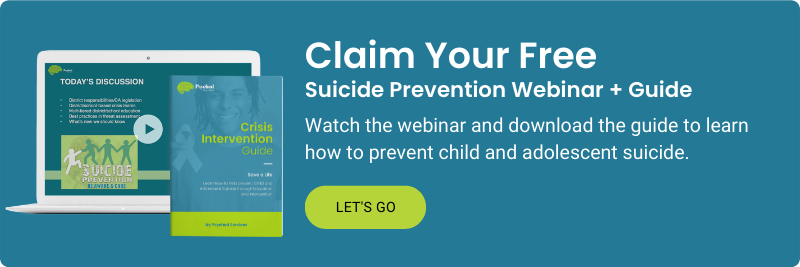Uncover the Purpose of Challenging Behavior with a Functional Behavior Assessment

While Einstein noted, “The definition of insanity is doing the same thing over and over again, but expecting different results,” it’s easy for parents and teachers to fall into the same pattern when responding to a child’s problem behavior. If you’re not getting the results you want with your current behavior reduction techniques, it might be time to consider strategies from Applied Behavior Analysis (ABA) therapy, the science of changing socially significant behavior. Depending on your need there are many available tools to improve the behaviors you want to see changed.
ABA therapy focuses on learning new skills and techniques to reduce challenging behavior. It’s common for teachers and parents to jump right to skill acquisition when first applying ABA techniques. However, in order to effectively teach new skills, problem behaviors need to be addressed. Since we see that a child’s behavior can limit their success academically and socially, we encourage parents, teachers and caregivers to prioritize behavior reduction techniques. The first step is to complete a Functional Behavior Assessment.
What is a Functional Behavior Assessment?
While many people can identify what problem behavior they are interested in reducing such as tantrums or aggression, the reason for the behavior—the why—is often not revealed until a Functional Behavior Assessment (FBA) is done. Going beyond what the behavior is and how it looks is a critical step to maximize the effectiveness of behavioral interventions. Behavior does not occur in a vacuum and that applies directly to understanding all behaviors, including the challenging ones our kids exhibit. To create a successful behavior plan, it’s critical to understand the environment that fosters the behavior. Equally important is to identify the purpose of the negative behavior. What is the child trying to communicate or solve by engaging in the challenging behavior and what are some alternatives to it? As the name suggests, part of this assessment is to get to the function of the behavior.
It may be tempting to skip this step, but it is always recommended by ABA practices as a first step to address problem behavior. We understand that doing a full assessment can be lengthy and in some cases not feasible due to constraints in a school setting or home environment since a complete FBA looks at data that’s been collected over several weeks. However, a professional trained in ABA may be able to create a functional hypothesis early in the process that can inform strategies for how to address the behavior, specially for less intense/severe behaviors where other positive intervention strategies have not yet been tried.
One of the primary evaluations an analyst will do with you is to look at those problematic behaviors you are seeing and put them in the context of the function of the behavior—in other words, WHY is this behavior occurring? WHAT is the child getting out of it? If we know WHY we can best adjust the things that are maintaining the behavior to reduce it and replace it. There are many reasons why a problematic behavior occurs, but often they can be boiled down into four general categories: Escape, Attention, Tangible, Sensory (EATS).
- Escape: The child engages in the behavior in order to avoid or escape something. This can be a task they do not like (i.e. homework or chores), a person they find aversive (i.e. doctor or dentist) or even just escaping an activity or event (i.e. the babysitter is coming or going to the grocery store).
- Attention: This one is tricky because it is not just positive attention—a child could engage in the problem behavior because they know they will get attention in the form of the interaction with the caregiver, whether it is praise, comfort or a reprimand. We can get confused as parents because a reprimand should be aversive, but for some children, it may be the attention they want.
- Tangible: The problem behavior may occur so the child can gain access to something (i.e. a treat, a toy, a favorite person, etc). By engaging in the problem behavior, the child is attempting to access something that is currently withheld or they previously had access to and no longer do.
- Sensory: The problem behavior occurs because something about the behavior itself is motivating in a sensory way for the child. This could mean they enjoy the feeling of crying/screaming, it could be a relief from pain to kick something, etc. This function describes when it’s the internal environment that is motivating the child to engage in the behavior.
There are many tools that could be used to ascertain this information, but before working to reduce any problematic behavior, an analyst will work with you to discover the WHY to lay the foundation for the most effective behavior intervention plan possible for your child.
Behavior Plans and Identifying Replacement Behaviors
After the FBA is done and the function of behaviors is identified, a behavior plan is created. Sometimes called a plan of action, an intervention or a positive behavior support plan, every behavior plan is individualized for the specific needs of the individual involved.
When the FBA is complete, we know why the challenging behavior is happening and what is going on around the child when it does happen. Ultimately, the behavior plan outlines the strategy for how to reduce the challenging behavior in favor of alternative actions that get the same outcome. To successfully reduce negative behavior, it’s important to have both components: the FBA and a behavior plan. If you spent the time, energy and money to figure out why a behavior is occurring and then don’t craft a plan for how to go about reducing it, there will be no change in the behavior even if you might understand why it’s occurring more than you did before.
Behavior plans can be created by an ABA professional, parents, teachers, school psychologists and behavior analysts, and it is best when done in collaboration with all parties that will be implementing it. A behavior plan should include ways to prevent and react to the target behavior when it happens with the goal to reduce the behavior. Just as behavior does not occur in a vacuum, looking at the “why” of behavior as we did before tells us that behavior always serves a purpose. We cannot eliminate a challenging behavior without replacing it and teaching a new, more positive behavior to meet the need the challenging behavior was accessing. Regardless of who creates a behavior plan, it must be shared with all caregivers from parents to grandparents, teachers and any other professionals who interact frequently with your child. It’s important to set attainable behavior reduction goals and not expect success to be achieved only when the negative behavior is completely gone. The goal is to reduce the behavior after implementing the behavior plan.
At Psyched Services, our board-certified behavior analysts can help schools and parents with behavior reduction techniques. Our team is available to complete FBAs and to develop practical and evidence-based strategies to reduce challenging behavior.
In addition, our Pocket Coaching services offer convenient access to a behavior expert through video conference or phone that can offer essential support when implementing a behavior plan. Please contact us to get started on a strategy to reduce challenging behavior.





